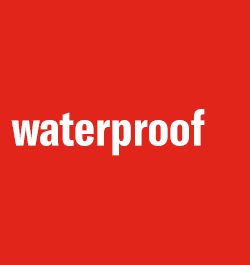Brick/chimney issues in St. Louis
« Back To Roofers TalkI'm still dealing with the 3 days of rain we had here in St. Louis, MO. We don't have this problem very often but I am constantly explaining how chimneys became super soaked and leaked. Most of the leaks I looked at where from the chimney, not the flashing/shingle work! Some homeowners don't agree, its annoying having to explain everything over and over again!
I have probably addressed thousands of brick chimney leaks over the years and have found that it's important to address every possibility if your gonna own the leak. Most of my customers have had multiple contractors work on their leak by the time I'm looking at it. Flashing work, waterproofing, tuck pointing, and crown work. All of these things done separately is usually a waste of money. I give a 2 year no leak warranty as long as I address all aspects. My contracts usually read new counter/step flashing, tuck point as needed, clean off algae build up, 2 coats of water repellant, repair and seal cracks in crown as needed, and 2 coats of synthetic crown coat on entire crown. Even if we're completely rebuilding the chimney the water repellant and synthetic crown seal is a must! If your a roofing contractor that addresses leaks you need to be able to do masonry work as well other wise you end up playing the blame game with other contractors. One last thing I always check especially if it's an older home is what's venting into the chimney? If it happens to have a furnace venting directly into the chimney without a metal liner than it will still deteriorate from the inside out and it needs to be corrected one way or another.
I just gave you boys a wealth of knowledge learned the hard way over 20 years! Your Welcome!
Thank you all for your responses. I will need to do a more thorough job in addressing chimneys when we do the roof. I like your approaches with the shrink wrap and also including waterproofing chimney with estimate. I'm sure we will have more soakers in the future with our unpredictable weather. It's never boring with our weather in the midwest.
At first I thought the shrink wrap was brilliant. But now I see you guys are getting carried away.

One of the first things I do with a brick chimney is inspect the mortar and bricks. I scratch it with a flat head screwdriver or nail bar to test the strength of the mortar. I include in the contract to re-flash the chimney that a Mason will be needed as well and fully explain it to the client that even after we reflash the chimney there could still be a leak if the masonry work is not done yet. Every chimney flash job is waterproofed with GAF Storm Guard water proofing membrane before flashing and shingles are installed. Warranty issues are less than 1%.
Some of the chimneys are so bad that it doesn't make since to even try to save them in cases where the client does not use the chimney anymore and doesn't plan to in the future. The trick here is to make double sure that there is not any gas exhaust venting out through the chimney.
When I run into an old dilapidated chimney that was put into the middle of a valley when an addition was built and the client says in desperation that 8 roofers have tried to stop the leaking but no one has been able to, I just smile real big when they say the home is all electric and we don't use the fireplace anymore. In this case I give the lifetime warranty concerning leaks around the chimney once its gone! lol
We tell the customer when selling the job that the chimney needs to have work done. Or that area of the roof will not be under warranty. We also waterproof every chimney when doing the roof. We use Protectosil http://www.protectosil.com/product/protectosil/us/products/water-repellents/Pages/default.aspx
We shrink wrap them if they are leaking and we can not redo the chimney right away. We started re-pointing and rebuilding chimneys last year.
The bricks will take in water faster then the mortar sometimes.
Wow, I'm glad I'm not the only one who has had this problem. Speedy: I'm not far from STL and that was quite a soaker we had. I just ponied up $950 for a ceiling and re-flashed the chimney. Still not sure if I should have done that, but I know we had a guy flashing our chimneys around that era that was making mistakes.
GREAT idea on the shrink wrap. Tarps are tedious sometimes, and ugly. At Sam's club you can buy a big ol' roll of shrink wrap to make it quicker.
I've experienced this problem on the wet West Coast for years. If the mortar joints are old and soft, they get saturated and the rain will wick in behind the step and counter flashings. When it reaches the dry brick below the roof line it will drip either on the outside of the chimney down to the ceiling or on the inside down to the basement or bottom floor.
A cheap way to prove to a customer that it is not the roof leaking or a flashing problem is to pick up a 12" roll of shrink wrap and wrap the chimney from the bottom up to the top. Make sure the shrink wrap extends over the step or counter flashings at the bottom. Tape it off with some of that red vapor barrier tape to secure.
I've had a 100% success rate with this method over the years. Helps determine the cause of the problem especially if you are dealing with a warranty claim on a previous job you have done.
The chimney will have to be re-pointed to correct the problem. I don't charge for the shrink wrap if it's a warranty issue but will tell the customer that if they get chimney work done, there will be a charge to inspect the flashing and the roof to re-instate workmanship warranty coverage from the original job. Have seen in the past where the person re- pointing the chimney has nailed walk boards through the shingles and left holes when they left.









-2.png)











